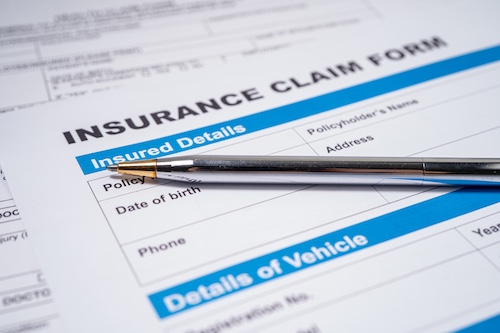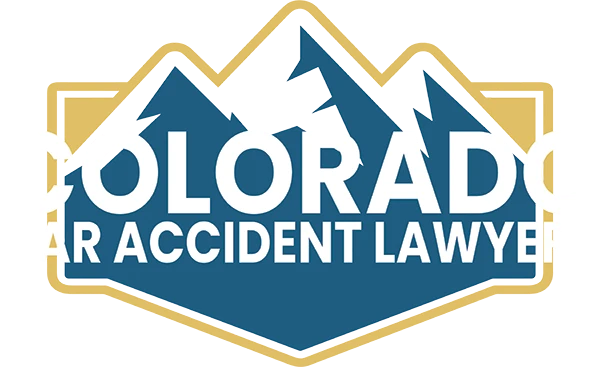Understanding Fault in Colorado Car Accidents
If you are injured in a car accident in Colorado, the amount of compensation you can recover depends on who was at fault. Colorado uses a modified comparative fault system to decide how responsibility is shared and how much each party can recover. This rule affects every personal injury claim involving a car accident, especially when more than one driver may have caused the crash.
In this blog, we explain how Colorado’s modified comparative fault rule affects car accident claims, how fault is determined, and why working with an experienced Denver car accident attorney is important to protect your right to recover compensation.
What Is Modified Comparative Fault?
Understanding how modified comparative fault works is important when filing a car accident claim in Colorado. This system directly affects how much compensation an injured party may recover.
Definition of Modified Comparative Fault
Modified comparative fault, also called modified comparative negligence, is a legal rule used in Colorado personal injury cases, including car accidents. Under this rule, a person can recover damages only if they are found to be less than 50 percent at fault for the accident. If the injured party’s share of fault reaches 50 percent or more, they are barred from recovering any compensation. This is outlined in Colorado Revised Statutes § 13-21-111.
How Modified Comparative Negligence Differs From Other Systems
There are three common types of negligence systems: pure comparative negligence, pure contributory negligence, and modified comparative negligence. Colorado follows the modified comparative negligence rule.
In pure comparative fault states, an injured person may recover damages even if they are 99 percent at fault, but their recovery is reduced by their percentage of fault. In pure contributory negligence states, the plaintiff cannot recover any damages if they are even 1 percent responsible.
Colorado’s system falls in between. A plaintiff’s recovery is reduced by the amount of negligence attributable to them, but once their own fault reaches 50 percent, they lose the right to recover.
Purpose of the Modified Comparative Fault Rule
The goal of this rule is to assign financial responsibility based on the level of fault attributable to each party. It promotes fairness by allowing injured parties to recover damages when their own negligence is minor, but prevents recovery when their share of the blame is equal to or greater than that of the defendant or defendants.
Example in a Car Accident Case
If a driver is found to be 30 percent at fault in a car accident and the other driver is 70 percent at fault, the injured party can still recover 70 percent of the total damages. However, if the plaintiff’s negligence is 50 percent or more, the modified comparative fault rule prevents any recovery of damages.
Comparative Negligence vs. Other Negligence Doctrines
To understand Colorado’s modified comparative fault rule, it helps to compare it with other negligence systems used in different states.
Pure Contributory Negligence
Pure contributory negligence is the strictest doctrine. Under this rule, if a plaintiff is even 1 percent at fault for the accident, they cannot recover any compensation. Only a few states, like North Carolina and Maryland, still follow this rule. In those states, the plaintiff’s contributory negligence fully bars recovery, regardless of the defendant’s negligence or the amount of plaintiff’s damages.
Pure Comparative Negligence
Pure comparative negligence allows a plaintiff to recover damages even if they are mostly at fault. In these states, the court reduces the total recovery by the plaintiff’s percentage of fault. For example, if a driver is 80 percent responsible for a crash, they can still recover 20 percent of the total damages. This system focuses only on reducing the financial compensation based on own fault, not eliminating it.
Modified Comparative Negligence
Colorado uses modified comparative negligence, sometimes called the modified comparative fault rule. Under this system, a plaintiff may recover damages only if their share of fault is less than 50 percent. If the court finds the plaintiff’s fault to be equal to or greater than the combined fault of the other party or parties involved, recovery is barred. This rule, stated in C.R.S. § 13-21-111, is applied in all personal injury and car accident claims in Colorado.
Why These Differences Matter
These doctrines determine whether a plaintiff can recover damages, and if so, how much compensation they can receive. In car accident claims, the type of negligence rule affects legal strategy, settlement discussions, and court outcomes. Colorado’s approach gives injured parties a chance to recover if their negligence caused less harm than the other driver’s, but prevents recovery if they carry the majority of the total fault.
How Modified Comparative Negligence Affects Car Accident Claims
In Colorado car accident cases, the modified comparative fault rule directly impacts who can recover damages and in what amount.
Fault Percentage Reduces Compensation
Under Colorado’s modified comparative negligence law, the amount a plaintiff can recover is reduced by their percentage of fault. If a driver is found to be 20 percent at fault, their damages are reduced by 20 percent. This applies to both economic damages such as medical bills and lost wages, and non-economic damages like pain and suffering.
50 Percent Bar to Recovery
If the plaintiff’s fault is found to be 50 percent or greater, they are barred from recovering any compensation. This rule is outlined in Colorado Revised Statutes § 13-21-111. The law assumes that when a plaintiff is at least equally responsible for the accident, they should not receive payment from other parties.
Application in Common Accident Scenarios
Modified comparative fault often comes into play in accidents involving disputed liability. These include rear-end collisions, left-turn crashes, or multi-vehicle accidents. If more than one party is involved, courts or insurance adjusters must assess the respective fault of each. The plaintiff’s recovery will be reduced in direct proportion to their share of blame.
How Insurance Companies Use Fault
Insurance companies rely on the modified comparative negligence rule to lower claim payouts. Adjusters often try to increase the negligence attributed to the injured party. If they can push the total negligence attributable to the plaintiff to 50 percent or more, they can legally deny the claim. This makes it important to have a car accident attorney who can present evidence and protect the injured party’s right to recover damages.
Importance of Accurate Fault Assignment
Even small shifts in plaintiff’s percentage of fault can reduce compensation by thousands of dollars. Fault calculations are critical in determining how much compensation the injured person receives. The more negligence attributable to the other party, the higher the potential damages awarded to the plaintiff.
Determining Fault: Evidence and Arguments
In Colorado car accident cases, proving fault is key to how much compensation a plaintiff can recover under the modified comparative fault rule.
Key Evidence Used to Assign Fault
Fault is assigned based on facts, not assumptions. Common evidence includes police reports, witness statements, photographs of the scene, vehicle damage, medical records, and sometimes expert analysis. These help identify how much negligence caused the accident and who holds the greater percentage of fault.
Role of Police Reports and Witnesses
Police reports often provide the first official record of what happened. They may include traffic violations, statements from drivers, and opinions about who was at fault. Witness testimony can support or challenge those reports. This information is important in establishing negligence attributable to each driver.
Arguments About Fault by Insurance Companies
Insurance companies often use comparative negligence laws to shift fault attributable to the injured person. Their goal is to reduce the amount of money they must pay. If they can prove the plaintiff’s negligence was 50 percent or more, they may deny payment completely. They may also argue that the plaintiff failed to exercise reasonable care, increasing the claimant’s fault.
Role of a Car Accident Attorney
A car accident lawyer helps gather evidence and counter claims of plaintiff’s contributory negligence. Attorneys work to lower the plaintiff’s percentage of fault and highlight the defendant’s negligence. They build arguments to show that the injured party acted responsibly or that the other driver failed to meet the legal duty of care.
Multiple Parties and Shared Fault
When more than one defendant is involved, the court must divide combined fault among all parties. The plaintiff’s recovery depends on how much total negligence is assigned to others versus their own actions. Accurate fault assignment matters when calculating the damages awarded. Each party’s share of blame affects the final outcome.
Contact an Experienced Denver Car Accident Lawyer ASAP!
If you were injured in a car accident and need help understanding how modified comparative fault applies to your case, reach out to our team at Colorado Car Accident Lawyers today. Our experienced Denver car accident attorneys can assess your situation, gather key evidence, and fight to keep your percentage of fault low so you can recover the compensation you deserve.
Contact us at 864-313-2487 for a free claim review today!







